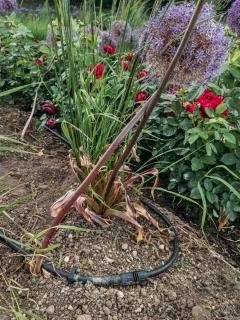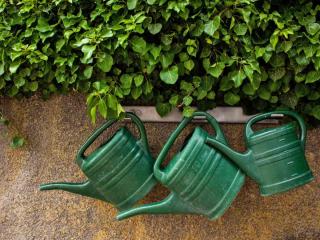

Before leaving to go on holiday, a few good tips can ensure that your garden plants will still be in great health when you get back. But in case of dry spell, watering must be both carefully planned and not excessive.
Are you traveling away from the garden for a week or more? First on your checklist is looking up the weather forecast to see how to set things up in your absence. If a few showers appear in the coming days, you won’t have much to plan for. If drought seems to be the trend, you’ll have to set up a watering system, and determine which areas deserve attention and which ones can cope with not being cared for.
 Plants with the highest water needs are usually in the vegetable patch (tomato, bean, zucchini, lettuce…): set up a drip system or micropore tube activated with a timer that flips the switch on and off every evening. Don’t forget to harvest ripe fruits and vegetables before leaving!
Plants with the highest water needs are usually in the vegetable patch (tomato, bean, zucchini, lettuce…): set up a drip system or micropore tube activated with a timer that flips the switch on and off every evening. Don’t forget to harvest ripe fruits and vegetables before leaving!
Garden boxes and pot arrangements also require a lot of water: place them in the shade and stake each of them with an upside-down water bottle for which the cap has been pierced with small holes. Special porous caps bought in stores can be screwed on standard bottles to ensure a regular flow of water. These are also great for indoor plants, too.

Your annuals, trees and especially your lawn will have to go without water, this is what responsible watering means! But don’t worry, they can cope with it very well!

Also remember to weed to avoid competition from water-thirsty weeds. Finally, mow your lawn high, 2½ inches (6 cm): it will resist much better.
Laure Hamann